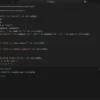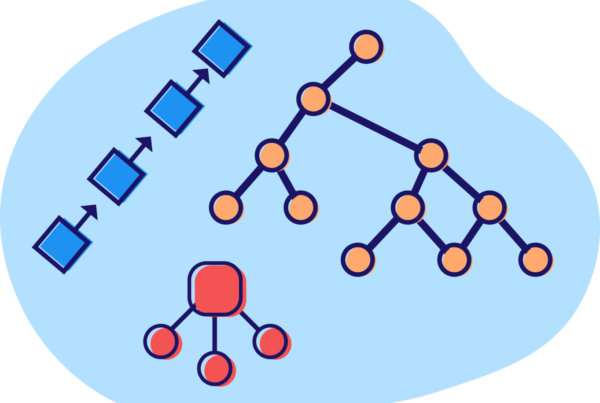Data structures and algorithms are essential topics for any aspiring or experienced programmer who wants to write efficient and scalable code. Python is a popular and versatile programming language that offers a wide range of built-in and third-party data structures and algorithms to choose from. In this article, we will explore some of the best resources and strategies to learn data structures and algorithms in Python.
One of the first steps to learn data structures and algorithms in Python is to understand the basic concepts and terminology behind them. Data structures are ways of storing and organizing data in a computer. Some of the built-in data structures in Python are lists, tuples, dictionaries, and sets. Lists are ordered collections of items that can be of different types. Tuples are similar to lists, but they are immutable, meaning they cannot be changed once created. Dictionaries are collections of key-value pairs that allow fast lookup of values by keys. Sets are collections of unique items that support mathematical operations like union and intersection.
 Some of the user-defined data structures in Python are linked lists, stacks, queues, trees, and graphs. Linked lists are linear collections of nodes that store data and a pointer to the next node. Stacks are collections of items that follow the last-in first-out (LIFO) principle, meaning the last item added is the first one removed. Queues are collections of items that follow the first-in first-out (FIFO) principle, meaning the first item added is the first one removed. Trees are hierarchical collections of nodes that have a parent-child relationship. Graphs are collections of nodes that are connected by edges, which can represent relationships or distances between nodes.
Some of the user-defined data structures in Python are linked lists, stacks, queues, trees, and graphs. Linked lists are linear collections of nodes that store data and a pointer to the next node. Stacks are collections of items that follow the last-in first-out (LIFO) principle, meaning the last item added is the first one removed. Queues are collections of items that follow the first-in first-out (FIFO) principle, meaning the first item added is the first one removed. Trees are hierarchical collections of nodes that have a parent-child relationship. Graphs are collections of nodes that are connected by edges, which can represent relationships or distances between nodes.
Algorithms are step-by-step procedures for solving a problem or performing a task. Some of the common algorithms in Python are search, sort, recursion, and dynamic programming. Search algorithms are used to find an item or a subset of items in a collection of data. Some examples of search algorithms are linear search, binary search, breadth-first search, and depth-first search. Sort algorithms are used to arrange items in a collection of data in a certain order. Some examples of sort algorithms are bubble sort, insertion sort, merge sort, and quick sort. Recursion algorithms are used to solve problems by breaking them down into smaller subproblems that have the same structure as the original problem. Some examples of recursion algorithms are factorial, Fibonacci, binary search tree traversal, and backtracking. Dynamic programming algorithms are used to solve complex problems by breaking them down into overlapping subproblems that can be solved optimally by using previously computed results. Some examples of dynamic programming algorithms are memoization, longest common subsequence, knapsack problem, and coin change problem.
To learn data structures and algorithms in Python, you can use various online resources such as books, courses, videos, blogs, and websites. Here are some of the recommended resources for beginners:
– Python Data Structures and Algorithms by GeeksforGeeks: This is a tutorial that covers the in-built data structures and some user-defined data structures and algorithms with well-explained examples and practice questions.
– Learn Data Structures and Algorithms with Python by Codecademy: This is a course that teaches you what data structures and algorithms are, why they are useful, and how you can use them effectively in Python with interactive exercises and projects.
– Learn Algorithms and Data Structures in Python by FreeCodecamp: This is a video course that introduces you to common data structures and algorithms in Python with clear explanations and visualizations.

Another important step to learn data structures and algorithms in Python is to practice implementing them in code. This will help you reinforce your understanding of how they work and how to use them effectively. You can use online platforms, such as LeetCode, HackerRank, CodeChef, Codewars, etc., that provide hundreds of problems and challenges related to data structures and algorithms in Python. You can also use interactive tools, such as Pythontutor or Thonny, that allow you to visualize and debug your code step by step.
Finally, one of the best ways to learn data structures and algorithms in Python is to apply them to real-world projects or scenarios that interest you or relate to your goals. This will help you develop your problem-solving skills and creativity, as well as showcase your abilities to potential employers or clients. You can find inspiration from online sources, such as Kaggle, GitHub, Medium, etc., that feature various examples and applications of data structures and algorithms in Python.
In summary, learning data structures and algorithms in Python is a rewarding and beneficial endeavor that can enhance your programming skills and career prospects. To achieve this goal, you should follow a systematic approach that involves understanding the basic concepts and terminology, practicing implementing them in code, and applying them to real-world projects or scenarios.








